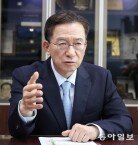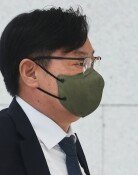Gov’t, ruling party hand out cash in market
Gov’t, ruling party hand out cash in market
Posted June. 26, 2021 07:18,
Updated June. 26, 2021 07:18
Bank of Korea Gov. Lee Ju-yeol said Friday that an accommodative monetary policy will get back on the normal track in an orderly manner starting from any appropriate point within this year, declaring in essence to increase the key interest rate by the end of the year. The central bank may have concluded that due to the highest household debt ever and soaring asset values, any longer period of the super-low interest rates will grow the seed of threat to the South Korean economy as a whole. The problem is that the South Korean government and the ruling Democratic Party of Korea intend to prime the pump by executing a revised supplementary budget plan of providing the market with more than 30 trillion won’s liquidity – the largest amount ever.
South Korean presidential office Cheong Wa Dae and the ruling party on Friday continued their discussions on the provision of a disaster relief fund. Whereas the ruling party proposes to give out a fund to every South Korean citizen, Finance Minister Hong Nam-ki is supportive of supplying fund money to 70 percent of the low-income bracket. However, it is expected that they will reach agreement on 80-90 percent in the end. Added to this, the South Korean government and the ruling party aim to boost domestic demand by implementing a consumption incentive program to return 10 percent of an increased amount of payments by credit and debit card.
With advanced economies including the United States gathering steam for recovery at a fast pace, concerns of inflation increase. Thus, it may be only natural that the South Korean central bank tries to tighten the purse strings to control market liquidity before it is too late. The low interest rates have driven up household debt to the nation’s GDP levels and allowed housing prices in the Seoul metropolitan area to skyrocket by 100 million to 200 million won in a week. If it is left unaddressed for some time, global austerity, once it happens, may cut back on asset values, drive individuals into bankruptcy and disturb the financial system.
Even as the Bank of Korea sounds a warning alarm, the government and the ruling party show no signs of putting the brakes on their spending. No matter what is set up as a standard for a disaster relief fund, more than 10 trillion won will be spent on those who do not feel the need of government support. If an amount of money is not spent to reduce national debt that increases by 100 trillion won every year but to be provided to the market, it is likely to exacerbate inflation and the bubble of the asset market.
A government supportive initiative for mom-and-pop stores and the self-employed is supposed to ensure a fast and generous grant as they have been driven by the COVID-19 pandemic to the verge of a closure. However, at a time when liquidity in excess requires a reduction, it is not reasonable to give out money to those financially stable so that they can be encouraged to spend money. It is no different than stepping both on the brakes and the accelerator.
Being under criticism for the marked difference between monetary policy and fiscal policy at the National Assembly on Thursday, Prime Minister Hong answered, “The government will make sure to prevent things from being derailed severely.” However, the announced supplementary budget plan is already not in line with the current macroeconomic policy. Such a high level of inconsistency in policy directions will only aggravate household debt and real estate market issues, leaving national debt piling up to an unnecessary level.
Headline News
- Med professors announce intention to leave hospitals starting Thursday
- Bridge honoring Sgt. Moon Jae-sik unveiled in Pennsylvania
- Chief of Staff Chung tells presidential secretaries to stay away from politics
- US FTC bans noncompete agreements
- N. Korea launches cyberattacks on S. Korea's defense companies







